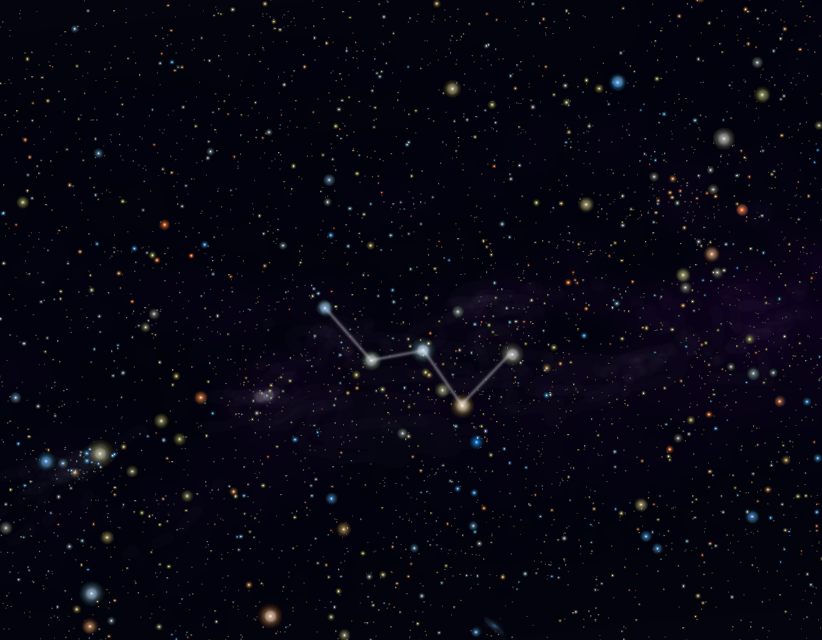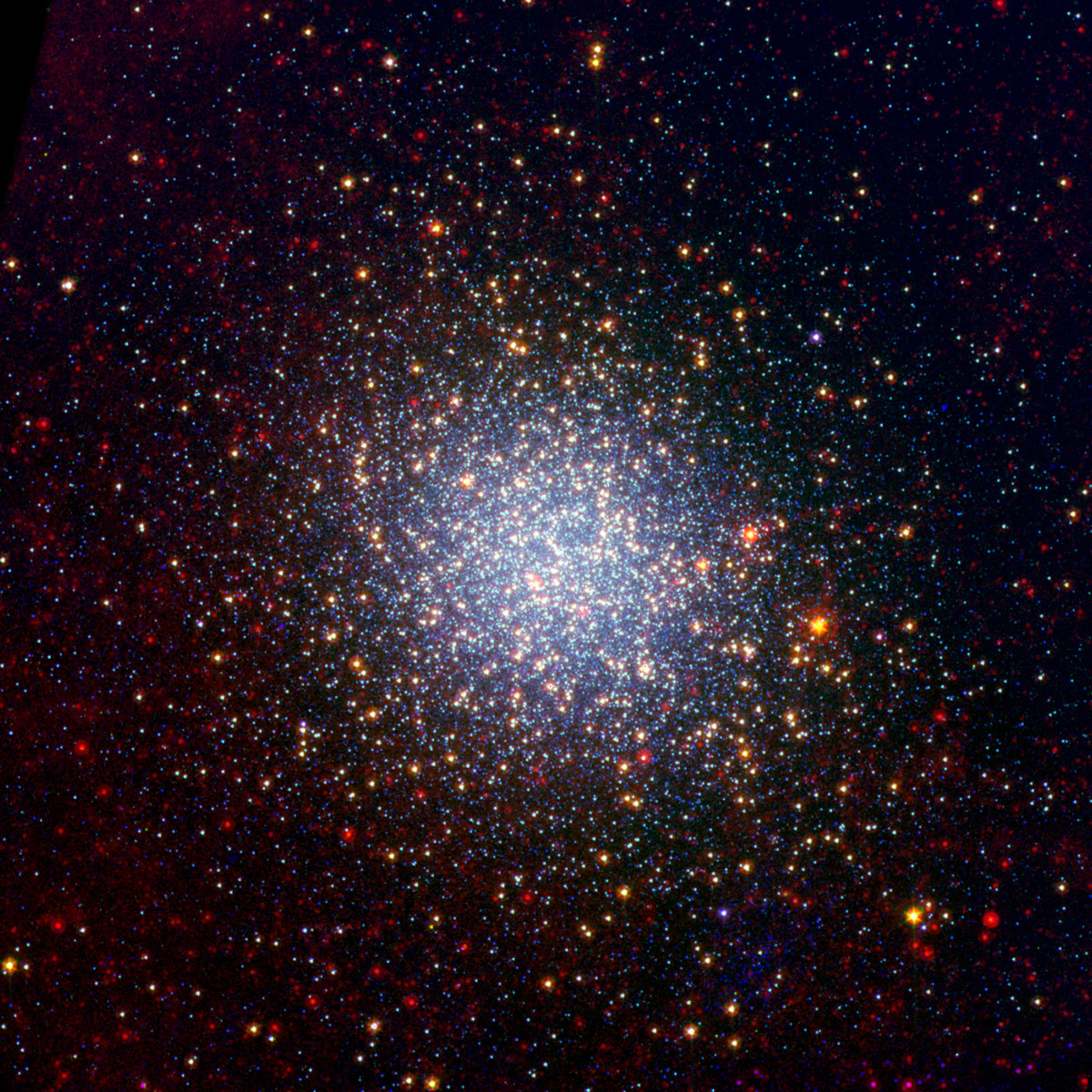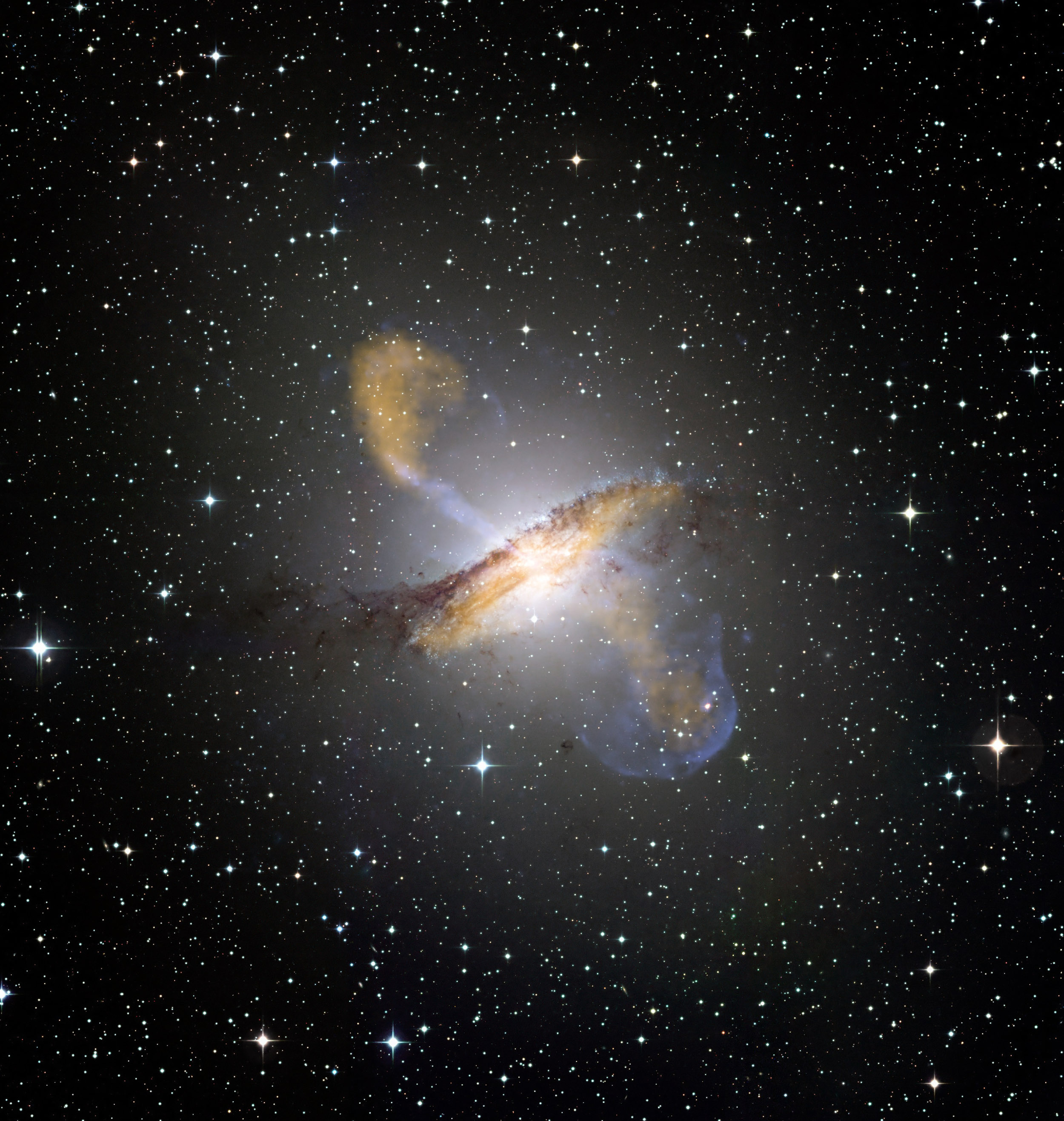CENTAURO

Roberto Mura - Own work,
CC BY-SA 3.0, wikimedia

Centaurus_constellation_map.png: Torsten Bronger derivative work: Kxx (talk)
CC BY-SA 3.0, wikimedia
Centaurus is one of the most important constellations in the sky and has been known about since Antiquity. Today, movements due to axial precession have caused the greater part of the Centaurus constellation to sink below the horizon line at our latitudes. It would be necessary to go to the Tropics to see it well. It would be worth the trip, though. You would be able to see the closest star to us, the globular cluster larger than our Galaxy and a one-of-a-kind galaxy called Centaurus A which emits intense radio waves.

No author leggible automatically. Pablo rigel~commonswiki supposed (according to copyright). No leggible source. Presumed own work (according to copyright), CC BY-SA 3.0, wikimedia
The Centaur is a mythological figure half-man and half-horse. The constellation honors the centaur Chiron, who was the wisest of all the centaurs. He was accidentally struck by one of Hercules’ poisoned arrows and was destined to agonize in pain forever due to his immortality. Zeus, who was moved to compassion for him, took away his state of immortality. After his death he was placed in the celestial heavens.
Hadar is the Beta star and it is much farther away. It is a little more than 530 light-years from the Solar System and is 3,000 times brighter than the Sun. It is a triple star. Its two companions are visible even with a telescope. It is a young star system whose asters have an elevated surface temperature that can reach almost 25,000°C. Its name in Arabic means ‘ground’ perhaps because it stayed low on the horizon near the ground in the skies of North Africa. Together with Alpha Centauri it acts as the ‘welding star’. Along their directive, towards Hadar, is the Southern Cross.
Menkent is the third brightest star. It is found in the northern part of the constellation and can be seen at the middle latitudes in the northern hemisphere. Its name in Arabic means ‘shoulder’. It is an orange giant star 58 light-years from us.

Di Jacco Th. van Loon (Keele University), Martha L Boyer (University of Minnesota), Iain McDonald (Keele University),
Charles Woodward (University of Minnesota), Robert Gehrz (University of Minnesota), Nye Evans (Keele University),
Andrea Dupree (Harvard Smithsonian Center for Astrophysics) - calltech.edu, Public domain, wikimedia
Omega Centauri is the brightest globular cluster in the skies. It can be seen with the naked eye and looks like a fuzzy star. It is visible from the southern edge of the Mediterranean or lower latitudes. It is thought to be the core of a dwarf galaxy which interacted with and was absorbed by the Milky Way. It contains a few million stars and is 16,000 light-years from us.

Di ESO/WFI (Optical); MPIfR/ESO/APEX/A.Weiss et al. (Submillimetre);
NASA/CXC/CfA/R.Kraft et al. (X-ray); eso.org,
CC BY 4.0, wikimedia
NGC 5128 is the galaxy which contains the radio source of Centaurus A. It is theoretically visible from Italy, best seen at latitudes lower than 40° parallel. It is a very particular object, with an elliptic shape and a dark dust lane along its equator. It has a supermassiveblack hole at its core which expels jets of matter that emit radio waves. It is 15 million light-years from us.
Southern Hemisphere: the constellation can be seen from February to September. At the southern middle latitudes, from the end of May and the beginning of June it can be found high, almost at the zenith, in the evening towards the south.